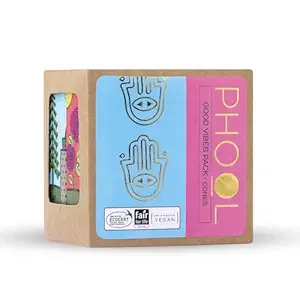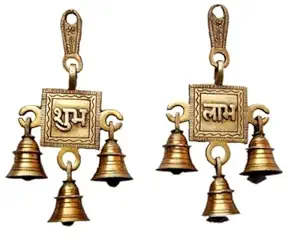મારો સોનાનો ઘડુલો રે હા પાણીડાં છલકે છે
મારો સોનાનો ઘડુલો રે હા પાણીડાં છલકે છે
હો રાજ ઘૂંઘટની ઓરકોર પાલવની ઓરકોર
ગોરું મુખલડું મલકે રે હા પાણીડાં છલકે છે
મારો સોનાનો ઘડુલો રે હા પાણીડાં છલકે છે…
હે પચરંગી પાઘડી વાલાને બહુ શોહે રાજ
હે નવરંગી ચૂંદડી ચટકે ને મન મોહે રાજ
નવરંગી ચૂંદડી ચટકે ને મન મોહે રાજ
હો રાજ ઘૂંઘટની ઓરકોર પાલવની ઓરકોર
ગોરું મુખલડું મલકે રે હા પાણીડાં છલકે છે
મારો સોનાનો ઘડુલો રે હા પાણીડાં છલકે છે…
હે અંગે અંગરખું વાલાને બહુ શોહે રાજ
હે કમખે તે આભલા ચટકે ને મન મોહે રાજ
કમખે તે આભલા ચટકે ને મન મોહે રાજ
હો રાજ ઘૂંઘટની ઓરકોર પાલવની ઓરકોર
ગોરું મુખલડું મલકે રે હા પાણીડાં છલકે છે
મારો સોનાનો ઘડુલો રે હા પાણીડાં છલકે છે…
Overview of "Maro Sonano Ghadulo Re"
Title & Meaning
'Maro Sonano Ghadulo Re' is a traditional Gujarati Garba song, celebrating devotion and cultural vibrancy during Navratri festivities.
Artist & Recording Details
Performed by folk artists across Gujarat, the song is popular in live Navratri events and has multiple recorded versions.
Genre & Occasion
A devotional folk Garba, sung during Navratri nights and cultural events dedicated to Goddess Amba.
Language & Dialect
Lyrics are in Gujarati, reflecting regional dialects and expressions tied to traditional Garba and folk culture.
Popularity & Reach
Widely performed in villages, towns, and cities; cherished for its rhythm, devotion, and cultural significance.
Lyrics Structure & Themes
Devotional Invocation
The song begins with praises to Goddess Amba, invoking her blessings for prosperity and protection.
Repetitive Chorus
Chorus lines are repeated to maintain rhythm and encourage group participation during Garba.
Imagery & Symbolism
Lyrics include imagery of lights, festivities, and traditional rituals symbolizing devotion and celebration.
Community & Togetherness
Highlights the collective joy of dancing, singing, and celebrating Navratri together.
Emotional Resonance
Lyrics evoke happiness, devotion, and spiritual connection for both performers and audience.
Musical & Performance Elements
Instrumentation & Rhythm
Traditional instruments like dhol, dholak, and hand claps energize dancers and enhance the festive atmosphere.
Tempo & Dynamics
Starts with moderate tempo and gradually increases intensity, matching the energy of Garba dancers.
Live vs Studio Renditions
Live performances include extended verses and audience interaction, while studio recordings are concise and polished.
Dance Cues & Movements
Lyrics provide guidance for clapping, spins, and coordinated footwork in circular Garba formations.
Audience Participation
Encourages all devotees to join in singing and dancing, creating an inclusive festive environment.
Festival & Cultural Significance
Navratri Connection
This Garba is central to Navratri, invoking blessings and adding joy and energy to celebrations.
Spiritual Meaning
The song reflects devotion and surrender to Goddess Amba, seeking her protection and blessings.
Cultural Heritage
Represents Gujarati folk traditions, preserving Garba melodies, rhythms, and rituals through generations.
Community Bonding
Encourages social cohesion through shared singing, dancing, and worship during Navratri.
Joyful Celebration
Provides happiness, spiritual upliftment, and cultural pride for participants and audiences alike.
How to Use & Share
Translations & Transliteration
Provide translations and transliterations for non-Gujarati users to understand the song’s meaning and participate meaningfully.
Audio / Video Embeds
Embed audio and video Garba performances to engage users and encourage interactive listening and dancing.
Printable Lyrics & PDFs
Offer downloadable PDF lyrics for personal, educational, or community Navratri use.
Performance & Dance Tips
Provide costume ideas, Garba steps, and timing guidance to enhance live performance experiences.
SEO & Social Media
Optimize using keywords like Gujarati Garba, Navratri Garba, Maro Sonano Ghadulo Re; add social sharing buttons.
'Maro Sonano Ghadulo Re' is a traditional Gujarati Garba song, celebrating devotion and cultural vibrancy during Navratri festivities.
Performed by folk artists across Gujarat, the song is popular in live Navratri events and has multiple recorded versions.
A devotional folk Garba, sung during Navratri nights and cultural events dedicated to Goddess Amba.
Lyrics are in Gujarati, reflecting regional dialects and expressions tied to traditional Garba and folk culture.
Widely performed in villages, towns, and cities; cherished for its rhythm, devotion, and cultural significance.
The song begins with praises to Goddess Amba, invoking her blessings for prosperity and protection.
Chorus lines are repeated to maintain rhythm and encourage group participation during Garba.
Lyrics include imagery of lights, festivities, and traditional rituals symbolizing devotion and celebration.
Highlights the collective joy of dancing, singing, and celebrating Navratri together.
Lyrics evoke happiness, devotion, and spiritual connection for both performers and audience.
Traditional instruments like dhol, dholak, and hand claps energize dancers and enhance the festive atmosphere.
Starts with moderate tempo and gradually increases intensity, matching the energy of Garba dancers.
Live performances include extended verses and audience interaction, while studio recordings are concise and polished.
Lyrics provide guidance for clapping, spins, and coordinated footwork in circular Garba formations.
Encourages all devotees to join in singing and dancing, creating an inclusive festive environment.
This Garba is central to Navratri, invoking blessings and adding joy and energy to celebrations.
The song reflects devotion and surrender to Goddess Amba, seeking her protection and blessings.
Represents Gujarati folk traditions, preserving Garba melodies, rhythms, and rituals through generations.
Encourages social cohesion through shared singing, dancing, and worship during Navratri.
Provides happiness, spiritual upliftment, and cultural pride for participants and audiences alike.
Provide translations and transliterations for non-Gujarati users to understand the song’s meaning and participate meaningfully.
Embed audio and video Garba performances to engage users and encourage interactive listening and dancing.
Offer downloadable PDF lyrics for personal, educational, or community Navratri use.
Provide costume ideas, Garba steps, and timing guidance to enhance live performance experiences.
Optimize using keywords like Gujarati Garba, Navratri Garba, Maro Sonano Ghadulo Re; add social sharing buttons.


